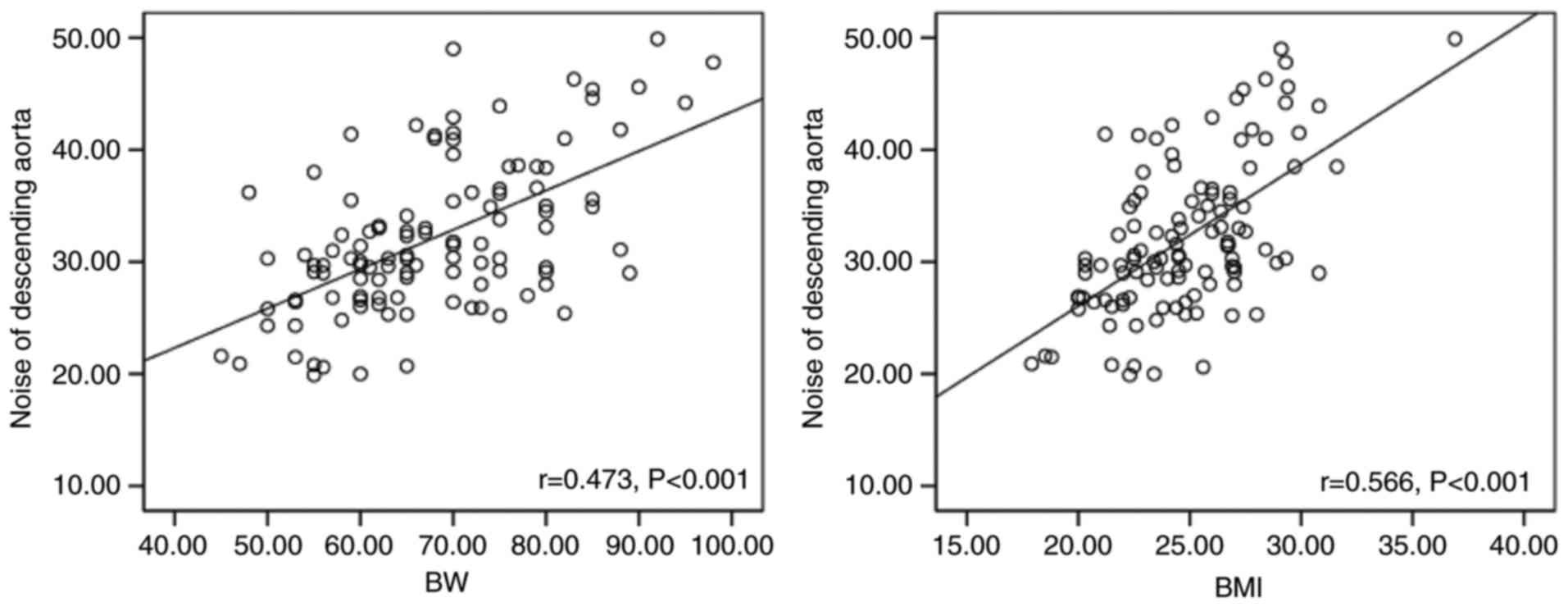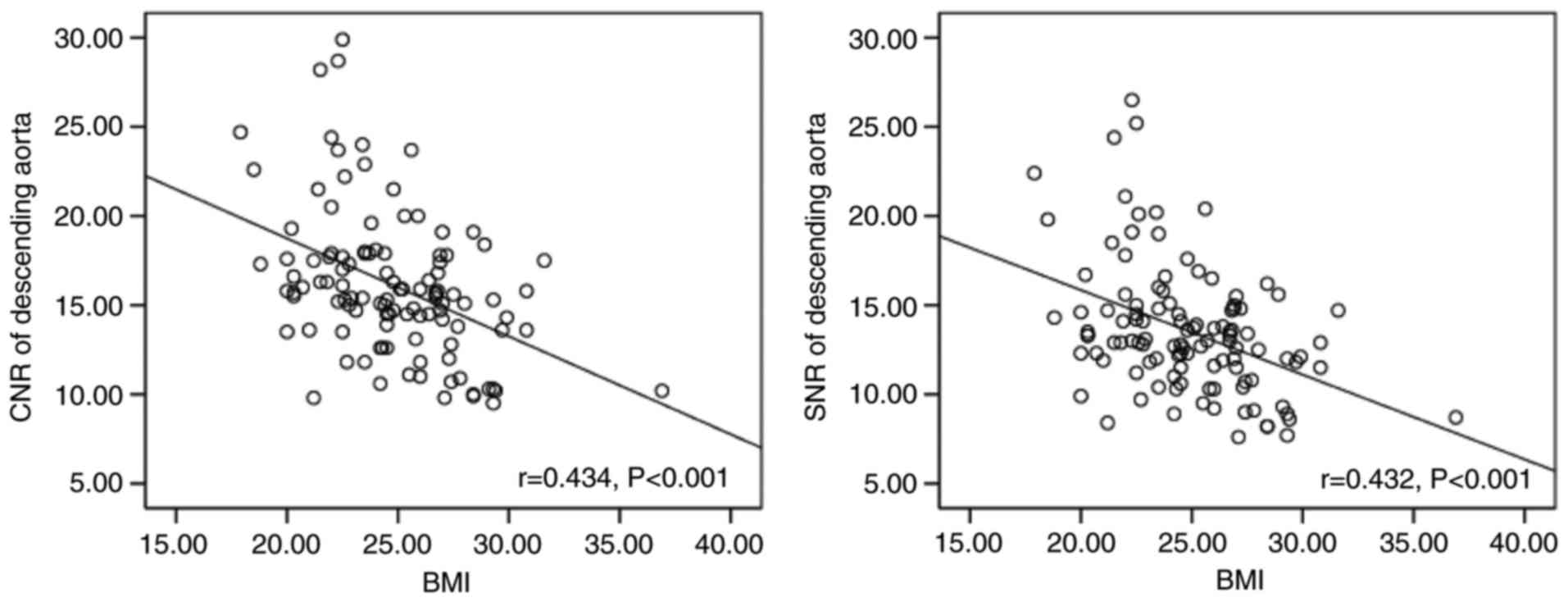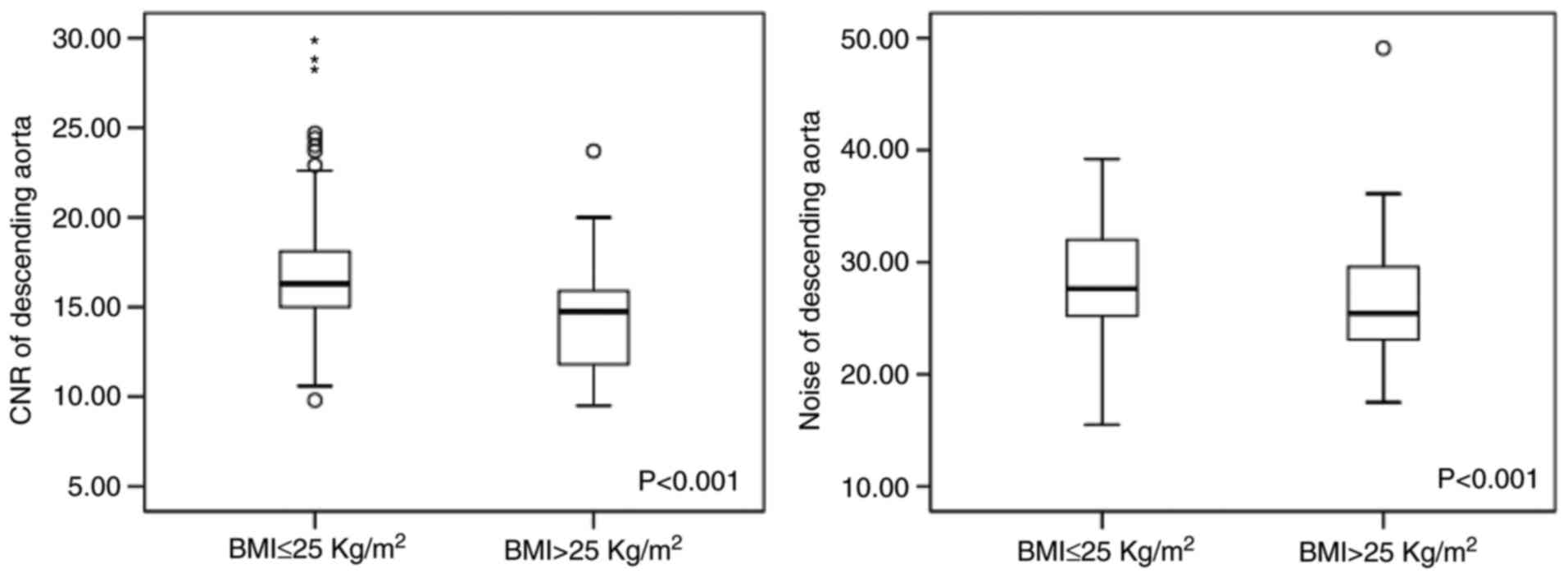|
1
|
Xu Yi, Tang L, Zhu X, Xu H, Tang J, Yang
Z, Wang L and Wang D: Comparison of dual-source ct coronary
angiography and conventional coronary angiography for detecting
coronary artery disease. Int J Cardiovasc Imag. 26 Suppl 1:S75–S81.
2010. View Article : Google Scholar
|
|
2
|
Kim YJ, Yong HS, Kim SM, Kim JA, Yang DH
and Hong YJ: Korean Society of Radiology; Korean Society of
Cardiology: Korean guidelines for the appropriate use of cardiac
CT. Korean J Radiol. 16:251–285. 2015. View Article : Google Scholar : PubMed/NCBI
|
|
3
|
Delewi R, Hoebers LP, Råmunddal T,
Henriques JP, Angerås O, Stewart J, Robertsson L, Wahlin M,
Petursson P, Piek JJ, et al: Clinical and procedural
characteristics associated with higher radiation exposure during
percutaneous coronary interventions and coronary angiography. Circ
Cardiovasc Interv. 6:501–506. 2013. View Article : Google Scholar : PubMed/NCBI
|
|
4
|
Meyersohn NM, Szilveszter B, Staziaki PV,
Scholtz JE, Takx RAP, Hoffmann U and Ghoshhajra BB: Coronary CT
angiography in the emergency department utilizing second and third
generation dual source CT. J Cardiovasc Comput Tomogr. 11:249–257.
2017. View Article : Google Scholar : PubMed/NCBI
|
|
5
|
Halliburton SS, Abbara S, Chen MY, Gentry
R, Mahesh M, Raff GL, Shaw LJ and Hausleiter J: Society of
Cardiovascular Computed Tomography: SCCT guidelines on radiation
dose and dose-optimization strategies in cardiovascular CT. J
Cardiovasc Computed Tomography. 5:198–224. 2011. View Article : Google Scholar
|
|
6
|
He G, Liu X, Liu Y, Wang W and Ke Z: Dose
study of electrocardiogram automatic tube current modulation
technology in prospective coronary computed tomography angiography
scans of overweight patients. Exp Ther Med. 9:2384–2388. 2015.
View Article : Google Scholar : PubMed/NCBI
|
|
7
|
LaBounty TM, Leipsic J, Poulter R, Wood D,
Johnson M, Srichai MB, Cury RC, Heilbron B, Hague C, Lin FY, et al:
Coronary CT angiography of patients with a normal body mass index
using 80 kVp versus 100 kVp: A prospective, multicenter,
multivendor randomized trial. AJR Am J Roentgenol. 197:W860–W867.
2011. View Article : Google Scholar : PubMed/NCBI
|
|
8
|
Wenz H, Maros ME, Meyer M, Gawlitza J,
Förster A, Haubenreisser H, Kurth S, Schoenberg SO, Groden C and
Henzler T: Intra-individual diagnostic image quality and
organ-specific-radiation dose comparison between spiral cCT with
iterative image reconstruction and z-axis automated tube current
modulation and sequential cCT. Eur J Radiol Open. 3:182–190. 2016.
View Article : Google Scholar : PubMed/NCBI
|
|
9
|
Scholtz JE, Wichmann JL, Hüsers K, Beeres
M, Nour-Eldin NE, Frellesen C, Vogl TJ and Lehnert T: Automated
tube voltage adaptation in combination with advanced modeled
iterative reconstruction in thoracoabdominal third-generation
192-slice dual-source computed tomography: Effects on image quality
and radiation dose. Acad Radiol. 22:1081–1087. 2015. View Article : Google Scholar : PubMed/NCBI
|
|
10
|
Ghoshhajra BB, Engel LC, Károlyi M, Sidhu
MS, Wai B, Barreto M, Shanmugam U, Hoffmann U, Brady TJ, Kalra M
and Abbara S: Cardiac computed tomography angiography with
automatic tube potential selection: Effects on radiation dose and
image quality. J Thorac Imaging. 28:40–48. 2013. View Article : Google Scholar : PubMed/NCBI
|
|
11
|
Layritz C, Muschiol G, Flohr T, Bietau C,
Marwan M, Schuhbaeck A, Schmid J, Ropers D, Achenbach S and
Pflederer T: Automated attenuation-based selection of tube voltage
and tube current for coronary CT angiography: Reduction of
radiation exposure versus a BMI-based strategy with an expert
investigator. J Cardiovasc Comput Tomogr. 7:303–310. 2013.
View Article : Google Scholar : PubMed/NCBI
|
|
12
|
Suh YJ, Kim YJ, Hong SR, Hong YJ, Lee HJ,
Hur J and Choi BW: Combined use of automatic tube potential
selection with tube current modulation and iterative reconstruction
technique in coronary CT angiography. Radiolog. 269:722–729.
2013.
|
|
13
|
Park YJ, Kim YJ, Lee JW, Kim HY, Hong YJ,
Lee HJ, Hur J, Nam JE and Choi BW: Automatic Tube Potential
Selection with Tube Current Modulation (APSCM) in coronary CT
angiography: Comparison of image quality and radiation dose with
conventional body mass index-based protocol. J Cardiovasc Comput.
6:184–190. 2012. View Article : Google Scholar
|
|
14
|
Zhu X, Shi Z, Zhu Y, Liu W, Yang G, Yu T,
Tang L and Xu Y: Individually adapted tube current selection and
contrast medium injection protocol of coronary CT angiography based
on test bolus parameters: A feasibility study. Acta Radiol.
56:666–672. 2015. View Article : Google Scholar : PubMed/NCBI
|
|
15
|
Zhu X, Zhu Y, Xu H, Wan Y, Choo KS, Yang
G, Tang L and Xu Y: An individualized contrast material injection
protocol with respect to patient-related factors for dual-source CT
coronary angiography. Clin Radiol. 69:e86–e92. 2014. View Article : Google Scholar : PubMed/NCBI
|
|
16
|
Lembcke A, Wiese TH, Schnorr J, Wagner S,
Mews J, Kroencke TJ, Enzweiler CN, Hamm B and Taupitz M: Image
quality of noninvasive coronary angiography using multislice spiral
computed tomography and electron-beam computed tomography. Invest
Radiol. 39:357–364. 2004. View Article : Google Scholar : PubMed/NCBI
|
|
17
|
Ferencik M, Nomura CH, Maurovich-Horvat P,
Hoffmann U, Pena AJ, Cury RC, Abbara S, Nieman K, Fatima U,
Achenbach S and Brady TJ: Quantitative parameters of image quality
in 64-slice computed tomography angiography of the coronary
arteries. Eur J Radiol. 57:373–379. 2006. View Article : Google Scholar : PubMed/NCBI
|
|
18
|
Austen WG, Edwards JE, Frye RL, Gensini
GG, Gott VL, Griffith LS, McGoon DC, Murphy ML and Roe BB: A
reporting system on patients evaluated for coronary artery disease.
Report of the Ad Hoc Committee for Grading of Coronary Artery
Disease, Council on Cardiovascular Surgery, American Heart
Association. Circulation. 51 Suppl 4:S5–S40. 1975. View Article : Google Scholar
|
|
19
|
Lee AM, Beaudoin J, Engel LC, Sidhu MS,
Abbara S, Brady TJ, Hoffmann U and Ghoshhajra BB: Assessment of
image quality and radiation dose of prospectively ECG-triggered
adaptive dual-source coronary computed tomography angiography
(cCTA) with arrhythmia rejection algorithm in systole versus
diastole: A retrospective cohort study. Int J Cardiovasc Imaging.
29:1361–1370. 2013. View Article : Google Scholar : PubMed/NCBI
|
|
20
|
Lu C, Wang Z, Ji J, Wang H, Hu X and Chen
C: Evaluation of a chest circumference-adapted protocol for
low-dose 128-slice coronary CT angiography with prospective
electrocardiogram triggering. Korean J Radiol. 16:13–20. 2015.
View Article : Google Scholar : PubMed/NCBI
|
|
21
|
Hausleiter J, Martinoff S, Hadamitzky M,
Martuscelli E, Pschierer I, Feuchtner GM, Catalán-Sanz P, Czermak
B, Meyer TS, Hein F, et al: Image quality and radiation exposure
with a low tube voltage protocol for coronary CT angiography
results of the PROTECTION II Trial. JACC Cardiovasc Imaging.
3:1113–1123. 2010. View Article : Google Scholar : PubMed/NCBI
|
|
22
|
Gordic S, Desbiolles L, Sedlmair M, Manka
R, Plass A, Schmidt B, Husarik DB, Maisano F, Wildermuth S and
Alkadhi H: Optimizing radiation dose by using advanced modelled
iterative reconstruction in high-pitch coronary CT angiography. Eur
Radiol. 26:459–468. 2016. View Article : Google Scholar : PubMed/NCBI
|
|
23
|
Abdullah KA, McEntee MF, Reed W and Kench
PL: Radiation dose and diagnostic image quality associated with
iterative reconstruction in coronary CT angiography: A systematic
review. J Med Imaging Radiat Oncol. 60:459–468. 2016. View Article : Google Scholar : PubMed/NCBI
|
|
24
|
Shen J, Du X, Guo D, Cao L, Gao Y, Yang Q,
Li P, Liu J and Li K: Prospective ECG-triggered coronary CT
angiography: Clinical value of noise-based tube current reduction
method with iterative reconstruction. PLoS One. 8:e650252013.
View Article : Google Scholar : PubMed/NCBI
|

















